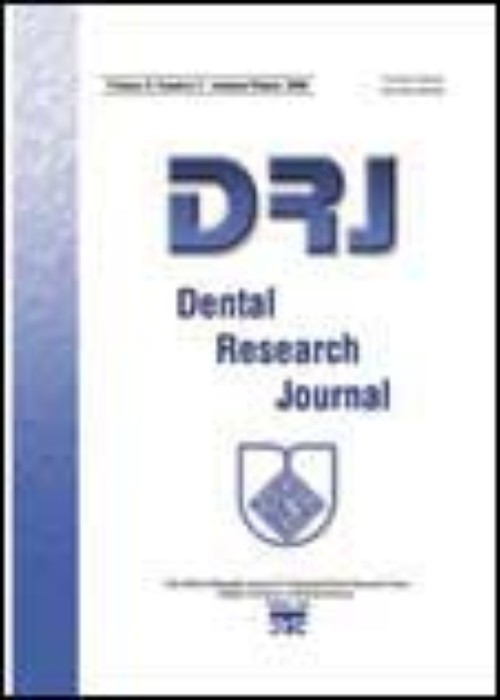Effect of thread depth and implant shape on stress distribution in anterior and posterior regions of mandible bone: A finite element analysis
Author(s):
Article Type:
Research/Original Article (دارای رتبه معتبر)
Abstract:
Background
The ability of modern implant dentistry to achieve goals such as normal contour, function, comfort, esthetics, and health to totally or partially edentulous patients guaranteed it to be more effective and reliable method for the rehabilitation process of many challenging clinical situations. In regard to this, the current study evaluates the effect of changing implant shape design parameters on interface stress distribution within the mandible bone.
Materials and Methods
A numerical procedure based on finite element (FE) method was adopted to investigate the influence of using different body design and thread depth of the inserted implant on the final stress situation. For the purpose of evaluation, a three‑dimensional realistic FE models of mandible bone and inserted implant were constructed and analyzed using a pack of engineering software (Solidworks, and ANSYS). Six different commercial implant models (cylindrical and tapered) with three different V‑shaped thread depths (0.25 mm, 0.35 mm, and 0.45 mm) were designed to be used in this study. The suggested implants used in this study were threaded in two different locations of mandible bone; the anterior region (Type I model) and posterior region (Type II model). A vertical static load of 250 N was directly applied to the center of the suprastructure of the implant for each model.
Results
For both models, evaluations were achieved to figure out the stress distribution patterns and maximum equivalent von Mises. The results obtained after implementation of FE dental‑implant models show that the highest stresses were located at the crestal cortical bone around the implant neck. In addition, the simulation study revealed that taper body implant had a higher peak value of von Mises stress than that of cylinder body implants in all types of bones. Moreover, a thread depth of 0.25 mm showed highest peak of maximum von Mises stresses for Type I and Type II models.
Conclusion
The simulation results indicate that all models have the same von Mises stress distribution pattern and higher peak von Mises stresses of the cortical bone were seen in tapered implant body in contrast to the cylindrical body.Keywords:
Language:
English
Published:
Dental Research Journal, Volume:16 Issue: 3, May-Jun 2019
Pages:
200 to 207
magiran.com/p1953908
دانلود و مطالعه متن این مقاله با یکی از روشهای زیر امکان پذیر است:
اشتراک شخصی
با عضویت و پرداخت آنلاین حق اشتراک یکساله به مبلغ 1,390,000ريال میتوانید 70 عنوان مطلب دانلود کنید!
اشتراک سازمانی
به کتابخانه دانشگاه یا محل کار خود پیشنهاد کنید تا اشتراک سازمانی این پایگاه را برای دسترسی نامحدود همه کاربران به متن مطالب تهیه نمایند!
توجه!
- حق عضویت دریافتی صرف حمایت از نشریات عضو و نگهداری، تکمیل و توسعه مگیران میشود.
- پرداخت حق اشتراک و دانلود مقالات اجازه بازنشر آن در سایر رسانههای چاپی و دیجیتال را به کاربر نمیدهد.
دسترسی سراسری کاربران دانشگاه پیام نور!
اعضای هیئت علمی و دانشجویان دانشگاه پیام نور در سراسر کشور، در صورت ثبت نام با ایمیل دانشگاهی، تا پایان فروردین ماه 1403 به مقالات سایت دسترسی خواهند داشت!
In order to view content subscription is required
Personal subscription
Subscribe magiran.com for 70 € euros via PayPal and download 70 articles during a year.
Organization subscription
Please contact us to subscribe your university or library for unlimited access!


